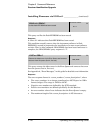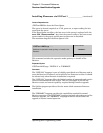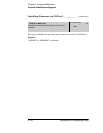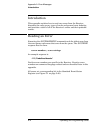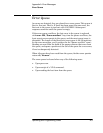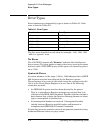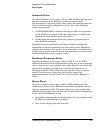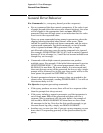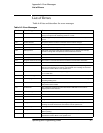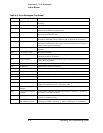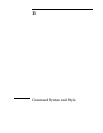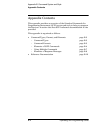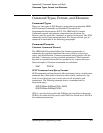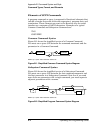
Appendix A Error Messages
General Error Behavior
A-6 Operating and Programming Guide
General Error Behavior
For Commands (i.e., non-query; doesn’t provide a response):
• For any command that has numeric parameters, if the value is out
of range (beyond either the min or max allowed settings), the value
will be clipped to the appropriate limit and error −222 will be
generated (data out-of-range error) as an indication that the value
wasn’t set to the requested value.
There are some commands having numeric parameters where the
clipping behavior described above doesn’t make sense. These
include the satellite include and ignore commands, and the status
system mask commands. For these commands, an out-of-bounds
value is ignored and error −222 is generated. Also, a single
out-of-bounds value may cause the entire command to be ignored.
For example, GPS:SAT:TRAC:INCL 3,87,5 will be entirely ignored
because 87 is out-of-range (i.e., 3 and 5 do not become included even
though they are in-range).
• Commands with multiple numeric parameters can produce
multiple errors. For example, if the initial date command is sent as
GPS:INIT:TIME 25,66,−7, the actual programmed value will be
23:59:00 (23 is max hour, 59 is max minute, 0 is min second) and
three out-of-range errors will be generated. As always, only a single
prompt will be returned, but in this case three errors will be in the
error queue (de-queued via SYST:ERR? or *CLS).
• Numeric parameters between in-range values are rounded to the
closest value. For example, sending GPS:REF:ADEL 1.7 ns will set
the antenna delay to 2 ns.
For Queries (response-generating commands)
• If the query produces an error, there will not be a response (other
than the prompt that always occurs).
• If the query includes a numeric parameter, and that parameter is
out of range, error −222 will be generated and there won’t be a
response (this is consistent with the prior bullet). An example of
this would be DIAG:LOG:READ? 25 when there are fewer than
25 messages in the log. Note that for this specific example, to get
the most recent log entry, simply use DIAG:LOG:READ?.
• Another way you can view this: if you get a query response you can
know that it is responding precisely to the question asked by the
query.



